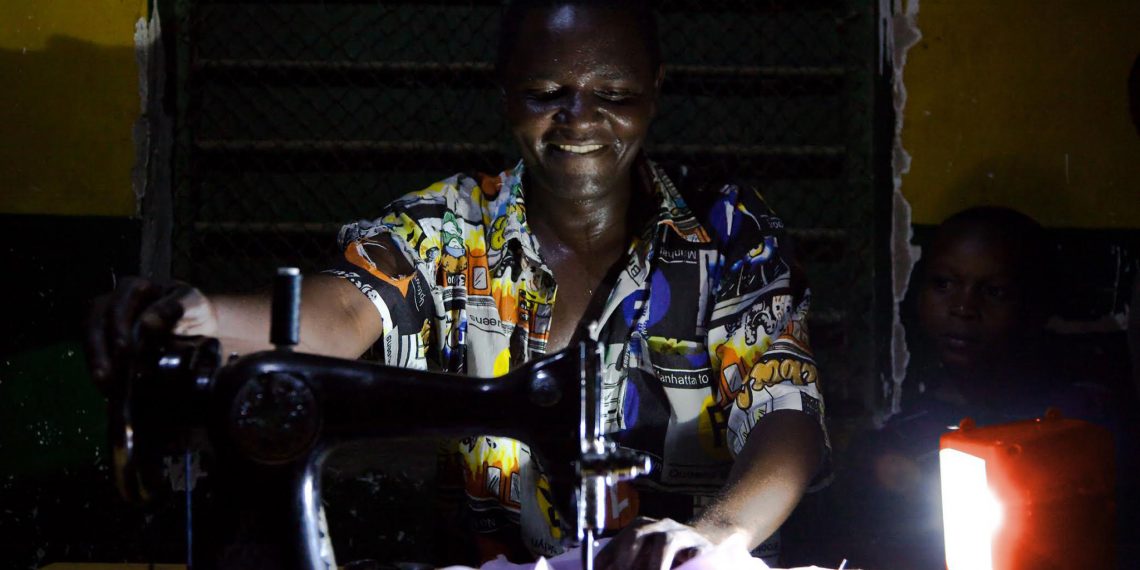More than 800 million people — 11% of the world’s population — still live without reliable electricity. The vast majority of them (600 million people) live in sub-Saharan Africa, and about 82 million reside in just three countries: Kenya, Tanzania and Uganda.
For these East Africans, lack of electricity is about so much more than powering homes — it affects their health, their educational opportunities and their livelihoods. Without reliable electricity, refrigerators can’t safely store food or vaccines. Hospitals can’t power medical devices. And schools can’t keep the lights on so children can study.
New data reveals an untapped solution: There’s high potential for wind, solar and hydropower in many areas of East Africa that currently lack electricity.
WRI’s new Energy Access Explorer platform leverages satellite imagery combined with local data to visualize energy supply and demand. With more than 20 geographic datasets (everything from renewable energy potential to grid connections and the locations of schools and hospitals) the platform equips electricity planners, impact investors, development finance institutions and clean energy entrepreneurs with the data they need to provide low-cost power to more unserved and underserved people.
The platform reveals how renewable energy is a viable solution for closing East Africa’s electricity gap:
1. Renewable Energy Potential is High for Many East African Households Without Electricity
East Africa is ripe for renewables, especially in areas that don’t yet have access to energy. Solar potential is high in 70% of the areas in Kenya without electricity. About 4.3 million people live in these areas. In Tanzania, 67% of the population still lacks electricity, and 25% of the area where people live without access has high potential for clean energy, which could reach 2.9 million people there. Uganda also has high potential for all renewables: 6.8 million people in the nation could benefit from solar, wind and small-scale hydropower.

2. Expanding Access to Clean Energy Can Improve Healthcare and Education in East Africa
East African countries face some of the world’s most significant development hurdles—including poverty, high maternal and child death rates, and low rates of literacy and education. Lack of a grid connection or unreliable power supplies are underlying contributors to these challenges.
Analysis from Energy Access Explorer reveals that 60% of the area where Uganda’s schools and hospitals are located has good potential for small-scale hydropower. In Kenya, there’s significant potential for small-scale hydropower in 68% of the area where healthcare and educational facilities are located. In Tanzania, almost the entire area containing schools and hospitals — 98% — has high potential for solar, and 70% has potential for hydropower. Energy and development ministries in East Africa can use Energy Access Explorer along with their existing planning tools to assess affordability and demand, and identify areas where electrification and socioeconomic development can be linked to meet the needs of the poor.

3. Renewable Energy Can Boost East African Economies and Businesses
Kenya as a nation is very reliant on agriculture: 70% of the population earns all or part of their income from the sector. Kenya’s agriculture is mostly rain-fed, which makes it vulnerable to droughts and other changes in precipitation — changes likely to become more severe in a warmer world.
About 20% of the area dedicated to irrigated and rainfed cropland in Kenya has high wind speeds. Installing wind turbines on farms in these regions can improve electricity access without displacing agriculture. Wind turbines could also power irrigation pumps and allow rain-fed farms to pursue irrigation technologies, which can help farmers increase crop yields and become more resilient to droughts and changing rainfall patterns.

4. Renewable Energy Potential is High Where Donor Aid is Needed Most
Donors and development agencies need better and more granular data to ensure that their agricultural, health and education projects meet their full potential — which can’t happen when electricity access is not guaranteed. Energy Access Explorer includes an Assistance Need Index, based on energy demand, economic activity and access to infrastructure and resources. It shows that 35% of Tanzania’s high-solar-potential areas are located where donor aid is needed most. 51% of the population in areas where donor aid is needed could directly benefit from small hydropower. Financial institutions, multilateral development banks and donors can use Energy Access Explorer to better understand how to get their funds to the places they’re most needed, and how to power projects to their full potential.

These are just some examples of how Energy Access Explorer can be used to help get electricity to the people who need it most. The world needs to move faster to deliver on Sustainable Development Goal 7: ensuring access to affordable, reliable, sustainable and modern energy for all by 2030. Linking electrification and socioeconomic development to meet the needs of the poor will be essential to achieving other development outcomes, from improving schools to reducing maternal mortality. Energy Access Explorer provides new information to help bridge the energy-development gap and empower decision-makers with the data they need to ensure a clean energy future for East Africa.
To learn more about the link between socioeconomic development and clean energy, read our Humans of Clean Energy blog series.



